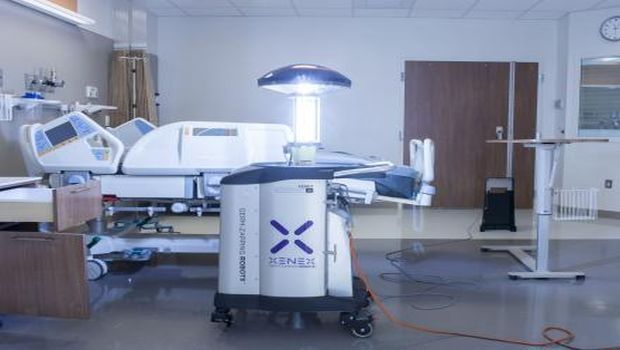Germ-Zapping Robots Put to the Test in Detroit Hospitals


A research team led by Keith S. Kaye, MD, MPH, director of clinical research in the Michigan Medicine Division of Infectious Diseases, will put germ-zapping robots to the test at Detroit hospitals. Michigan researchers will look at the ability of high intensity ultraviolet light delivered by Xenex Germ-Zapping Robots to protect patients from deadly superbugs, such as Clostridium difficile, found on surfaces.
Patients across the country are vulnerable to hospital-acquired infections – infections they can get while staying at a medical facility. Significant progress has been made in preventing some infection types, but they continue to be a major threat nationwide.
Kaye will work with colleagues at Wayne State University and the Detroit Medical Center to conduct the study in two hospitals covering 16 total hospital units at the DMC.
At the end of two years, researchers will report on rates of hospital-acquired infections in units where pulsed xenon UV light (PX-UV) was added to cleaning routines compared to units where a sham UV disinfection system was added to standard cleaning.
They’ll measure if cleaning plus PX-UV reduced the number of infections from drug-resistant organisms that cause C. diff, vancomycinresistant enterococci (VRE), Klebsiella pneumonia, Escherichiae coli producing extended-spectrum betalactamases (ESBLs), methicillin-resistant Staphylococcus aureus (MRSA) and Acinetobacter baumannii.
Hospital cleanliness is recognized as a critically important process to help prevent hospital-acquired infections. It involves extensive cleaning and disinfection after a patient has been discharged and before the next patient has been admitted to the room.
PX-UV lamps in the robot produce a flash of germicidal light in millisecond pulses, damaging the cell structure and stopping the DNA repair mechanisms for most pathogens
The unique design of the study, which is double-blinded and sham-controlled, makes it the first to examine the clinical impact of adding PX-UV to hospital cleaning routines.
Kaye is a professor of internal medicine at the University of Michigan. Before joining the faculty at Michigan Medicine, he was professor in the Division of Infectious Diseases and Department of Medicine at Wayne State University and DMC.
Source: Xenex Disinfection Services
Vet IP Roundtable 2: Infection Control and Biosecurity Challenges in Veterinary Care
March 31st 2025Veterinary IPs highlight critical gaps in cleaning protocols, training, and biosecurity, stressing the urgent need for standardized, animal-specific infection prevention practices across diverse care settings.
Invisible, Indispensable: The Vital Role of AHRQ in Infection Prevention
March 25th 2025With health care systems under strain and infection preventionists being laid off nationwide, a little-known federal agency stands as a last line of defense against preventable patient harm. Yet the Agency for Healthcare Research and Quality (AHRQ) is now facing devastating cuts—threatening decades of progress in patient safety.
From Shortages to Security: How Reusable Health Care Textiles Can Transform Infection Prevention
March 7th 2025Reusable health care textiles enhance infection prevention, reduce waste, and strengthen supply chains. Hygienically clean textiles offer a sustainable, cost-effective alternative to disposable PPE, ensuring patient safety and environmental responsibility.